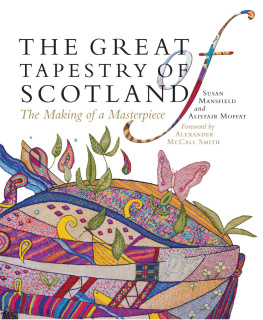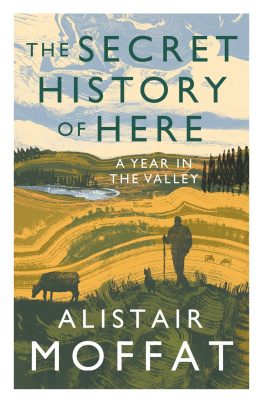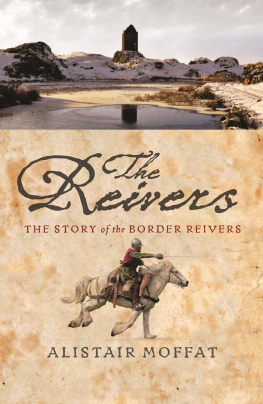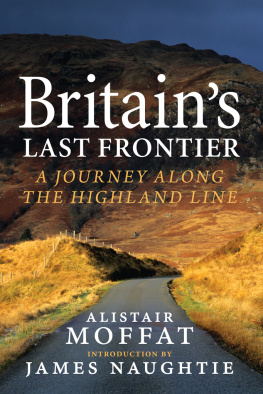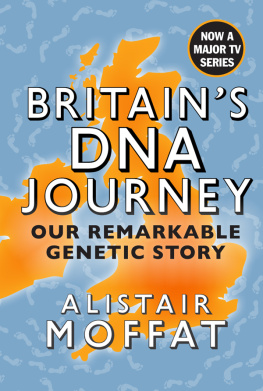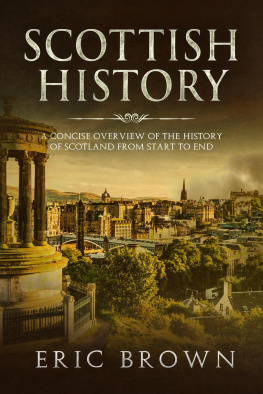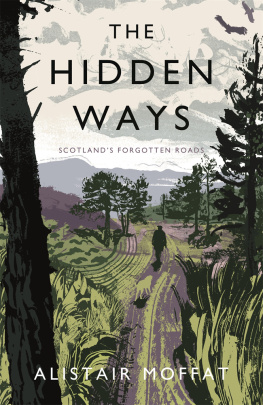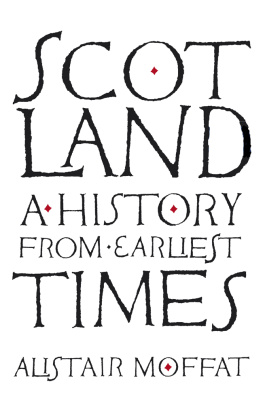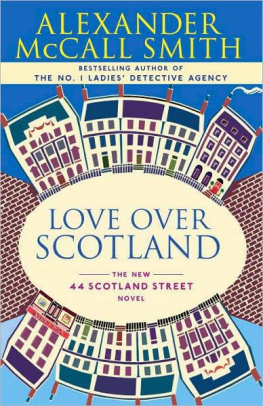Alistair Moffat - The Great Tapestry of Scotland: The Making of a Masterpiece
Here you can read online Alistair Moffat - The Great Tapestry of Scotland: The Making of a Masterpiece full text of the book (entire story) in english for free. Download pdf and epub, get meaning, cover and reviews about this ebook. year: 2014, genre: Detective and thriller. Description of the work, (preface) as well as reviews are available. Best literature library LitArk.com created for fans of good reading and offers a wide selection of genres:
Romance novel
Science fiction
Adventure
Detective
Science
History
Home and family
Prose
Art
Politics
Computer
Non-fiction
Religion
Business
Children
Humor
Choose a favorite category and find really read worthwhile books. Enjoy immersion in the world of imagination, feel the emotions of the characters or learn something new for yourself, make an fascinating discovery.
- Book:The Great Tapestry of Scotland: The Making of a Masterpiece
- Author:
- Genre:
- Year:2014
- Rating:3 / 5
- Favourites:Add to favourites
- Your mark:
- 60
- 1
- 2
- 3
- 4
- 5
The Great Tapestry of Scotland: The Making of a Masterpiece: summary, description and annotation
We offer to read an annotation, description, summary or preface (depends on what the author of the book "The Great Tapestry of Scotland: The Making of a Masterpiece" wrote himself). If you haven't found the necessary information about the book — write in the comments, we will try to find it.
Alistair Moffat: author's other books
Who wrote The Great Tapestry of Scotland: The Making of a Masterpiece? Find out the surname, the name of the author of the book and a list of all author's works by series.
The Great Tapestry of Scotland: The Making of a Masterpiece — read online for free the complete book (whole text) full work
Below is the text of the book, divided by pages. System saving the place of the last page read, allows you to conveniently read the book "The Great Tapestry of Scotland: The Making of a Masterpiece" online for free, without having to search again every time where you left off. Put a bookmark, and you can go to the page where you finished reading at any time.
Font size:
Interval:
Bookmark:
The Great Tapestry of Scotland


First published in Great Britain in 2013 by
Birlinn Limited
West Newington House
Newington Road
Edinburgh
EH9 1QS
www.birlinn.co.uk
Preface copyright Alexander McCall Smith 2013
Introduction and Timeline copyright Alistair Moffat 2013
The Making of a Masterpiece copyright Susan Mansfield 2013
Photographs copyright Alex Hewitt unless otherwise stated
Photograph of Alexander McCall Smith copyright Chris Watt Photography
All rights reserved. No part of this publication may be reproduced, stored or transmitted in any form without the express written permission of the publisher.
ISBN: 978-1-78027-133-0
eBook ISBN: 978-0-85790-615-1
British Library Cataloguing-in-Publication Data
A catalogue record for this book is available on request from the British Library
Version 1.0

This is the story of a country and of how that story came to be told in an extraordinary and beautiful work of art. The details of how the Great Tapestry of Scotland came into existence are set out in this book by Alistair Moffat and Susan Mansfield. Their accounts describe how this is the result of the hard work and dedication of many hundreds of people throughout Scotland, the stitchers, but we must not forget that behind this great communal work there stand three people who should be regarded as the creators of this wonderful treasure: the artist, the narrator, and the maker. The artist is Andrew Crummy. In his quiet and modest way, Andrew is an artist who has brought great joy to many and in doing so has enriched the public life of Scotland. There is a loveliness and a resolution in his work that has an immediate beguiling effect on those who see it. His is a great hand, and Scotland is fortunate to see the results of its labours. This tapestry is, quite simply, a masterpiece, and it is Andrews vision that lights it from the very first panel to the last.
Then there is the historical vision. This tapestry has a narrative, and that is the creation of a writer, Alistair Moffat, who has a profound understanding of Scottish history and who has the ability to communicate that understanding to people. Alistair has told Scotlands history here with fairness, honesty and good humour. People love to discuss the interpretation of the past, and the history of the Scottish nation, which sometimes delights in argument, is a well-known minefield. But what Alistair has achieved here is a dignified and balanced account of an often troubled history. Most importantly, it is a story that is told with love and that shows.
The maker is Dorie Wilkie. The telling of Scotlands story here is a matter of needle, thread and linen. Andrews drawings and Alistairs narration had to be translated into physical expression, and it is this process that Dorie, as co-ordinator and supervisor of the stitching, has handled so expertly. She has guided the hundreds of hands that have made this tapestry. She has encouraged and cajoled, inspired and taught the volunteers who have given so much of their time to create this magnificent object. Her influence shines through the whole work.
There are many others who have done so much to create this result, that it would be impossible to thank them all. But here it is: we have it now an inspiring and beautiful thing, an expression of love for a country, a gift from many hundreds of people to those who will see it and enjoy it in the future. Please look at it, whether you see it in the flesh or in the photographs in this book. Please enjoy it and think of the lives of the people whose story it tells. This tapestry brings us face to face with them and reminds us, I think, of who we are and of what our history means. The people we see in this tapestry are, after all, ourselves.
ALEXANDER McCALL SMITH
For two years a thousand needles have pricked panels of pristine linen and pulled a thread through our history. Working in small groups all across the nation, from Shetland to Galloway and from Argyll to the Buchan, volunteers sat down to stitch together a story of Scotland; to make a tapestry for a nation, something never before attempted. Its brilliance is startling. Rich but subtle colour makes the designs come instantly alive. A world of intricacy lies unseen behind it. A repertoire of stitches such as Lazy Daisy, French Knots, the Cretan Stitch, Heavy Chain and a score of others, the clever hands of the makers, the sweep, the brio of the drawing and its sureness of touch all combine to tell an old story and make it seem new and fresh.
But it is not really new, and although the achievement is glorious, it is not really a tapestry. But neither is Bayeux. More precisely they are both huge pieces of narrative embroidery that share many of the characteristics, impact and convenience of tapestries. Dating from the third century BC and probably some time before then these stories of thread and fabric have been made for millennia. Used as decoration, bursts of colour in an otherwise dreich hall, chamber or church, they also had a useful role as draught excluders in an age before well-fitting windows, doors or insulation. And they were portable. Once a court or a noble family moved on (these items were an expensive luxury), their servants would simply roll up a tapestry and re-hang it in whichever castle or palace they arrived at next.
The Bayeux Tapestry had another function beyond keeping out the draughts. Made in France at the behest of Odo, Bishop of Bayeux, it records the victory of his half-brother, William the Bastard, Duke of Normandy, at Hastings in 1066. Deeply political, it sought to tell a certain version of history and it could be hung as a vivid reminder of the dominance of the Norman elite. Its power is enduring but not only because it is a fascinating series of freeze-frames, a unique record of a pivotal moment in European history. It exerts a greater, more mysterious pull, something shared by all great tapestries. Somehow these sumptuously fabricated pieces of cloth reach out across centuries and, inviting close examination, they draw in those who gaze at the figures, the landscape and the gorgeous decoration. Tactile (but please dont), tapestries tap into history perhaps because they have been made by human hands and brains, and they depict events brought back to life not on the page or the screen but in an object of great intrinsic beauty.
The Great Tapestry of Scotland was Sandy McCall Smiths idea. Gifted, generous and great-hearted, he was inspired by the lovely Prestonpans Tapestry, the artistic child of Andrew Crummy. Once Sandy had recruited him, he called me. My office phone is ancient, bright red, very loud with an alarm-clock ring, and also ex-directory. When Sandy rang, the day after he saw the Prestonpans Tapestry, I jumped out of my seat, having been scribbling something, mustering what passes these days for concentration. Now I cant remember what I was doing, because within ten seconds I accepted Sandys flattering invitation to choose what might make up the panels of a tapestry that told Scotlands story. And we all took the first steps on a long, wonderful, emotional and unexpected journey.
Andrew Crummy is a great artist, simple as that, and this huge project is up to now his crowning achievement. I loved working with him, visiting his pleasingly cluttered, creative, crazy studio in Cockenzie, talking endlessly about what we could and couldnt do, about what stitchers liked to stitch, about language and about beginnings and endings. I met Dorie Wilkie, the Head Stitcher, who has overseen such a display of conspicuous quality, her own skills guiding others with a discerning but kind eye. And Gillian Hart has beautifully organised and marshalled what could so easily have been a ramshackle of bits and pieces, promises and uncertainties. None of this would have come to pass without Jan Rutherford and Anna Renz. Not only have they done a mountain of work on the press and public relations for the project, they also raised the bulk of the cash to pay for this flood of creativity. It has been a pleasure beyond measure to work with such a talented group.
Next pageFont size:
Interval:
Bookmark:
Similar books «The Great Tapestry of Scotland: The Making of a Masterpiece»
Look at similar books to The Great Tapestry of Scotland: The Making of a Masterpiece. We have selected literature similar in name and meaning in the hope of providing readers with more options to find new, interesting, not yet read works.
Discussion, reviews of the book The Great Tapestry of Scotland: The Making of a Masterpiece and just readers' own opinions. Leave your comments, write what you think about the work, its meaning or the main characters. Specify what exactly you liked and what you didn't like, and why you think so.

